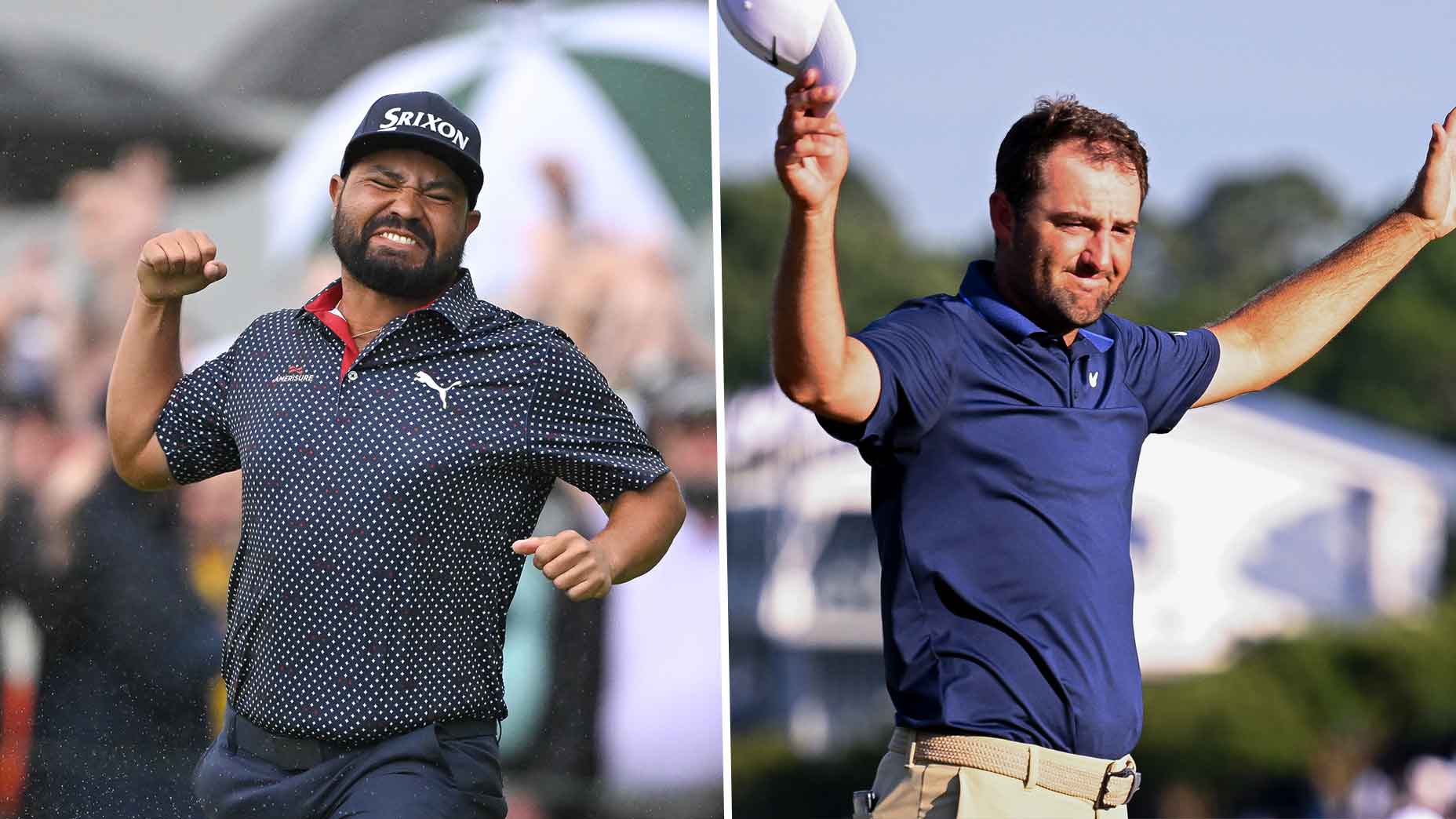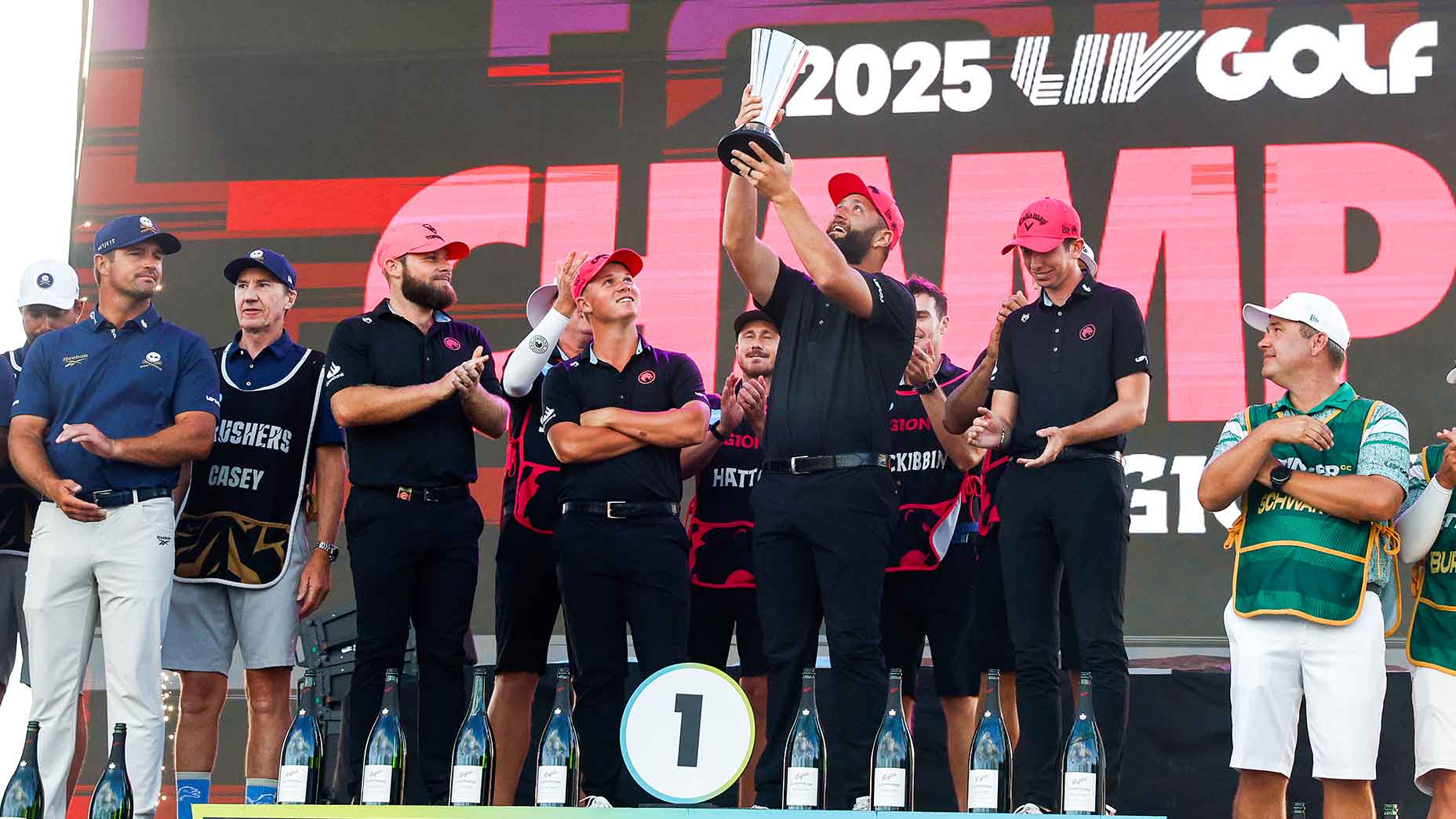 What will Tiger Woods’ next 50 years look like? I asked a psychic
What will Tiger Woods’ next 50 years look like? I asked a psychic
Why do we care so much if the Players is considered a major?
The annual debate as to whether or not the Players Championship should be considered the fifth major got off to a rollicking start in December, as two of golf media’s loudest voices, John Feinstein and Brandel Chamblee, spent the better part of a week trading barbs and opinions on Twitter. A handful of other media members were unwittingly tagged in the exchange, and Jason Sobel, of the Action Network, spoke for all of us when he called it a “hostage situation.”
The Chamblee–Feinstein kerfuffle sucked in casual fans and paid commentators alike. It was fascinating not for the content of the debate — arguments for and against the fifth major calcified years ago — but the intensity with which it was waged and what that says about the golf industrial complex. Why do we care so much if the Players is considered a major? What unseen forces are fueling the debate? And what is the golf media’s role in all of this? I interviewed both Chamblee, lead analyst for Golf Channel, and Feinstein, a contributor to numerous golf publications through the years and author of more than a half-dozen books about the game, to try to answer these weighty questions.
“The reason Golf Channel and NBC promote the Players as a quote-unquote major is because the Tour pushes them to do it,” says Feinstein. “Golf Channel was in a panic the last few years that they’d lose the broadcast rights to Tour events, so they bent over triple-backward to keep the Tour happy. I was on air for Golf Channel and used the old Jeff Sluman line: ‘When you go to Denny’s and order the Grand Slam, they don’t give you five things, do they?’ The producer in my ear yelled, ‘John, stop! You can’t say that here!’ ”
Parries Chamblee, “John likes to think there are nefarious forces at work, but I’ve argued for a long, long time that the Players should be a major. I came to that idea uncoerced by anybody. It’s just a logical conclusion.” Chamblee cites the Players’ strength of field, which is annually the strongest of any tournament, to which Feinstein says, “Yes, the bottom half of the field is deeper, but anybody who really matters is at all of the majors.”
ADVERTISEMENT
Chamblee is particularly bullish about the Stadium Course, saying, “If you’re willing to get away from the fact that Sawgrass was built in a swamp, that queens and kings did not walk the grounds and that billionaires don’t own houses next to it, it’s unassailably one of the finest championship tests we have. Amen Corner has nothing on Sawgrass’s 16th, 17th and 18th holes, other than aesthetics and a catchy name.” (Feinstein: “I’m not a golf course architect, but the only memorable hole there should have a clown’s mouth on it.”)
The PGA Tour does not oversee any of the major championships. It birthed the Players in 1974 to be its flagship event and in recent years has tried to elevate its status, granting a win as many FedEx Cup points as the majors and getting language inserted into the Hall of Fame criteria that gives a victory at the Players equal weight to a Grand Slam triumph. Officially, the Tour feigns neutrality. “The fifth major topic invariably comes up each year amongst media, but I can promise you we aren’t concerned with the label,” says commissioner Jay Monahan. “As you know, looking back over time and at how majors are designated, there is no scientific formula or approach, no set criteria. So we set our own criteria for the Players. We strive to be the best tournament in golf.”
As Chamblee suggests, the history and mythology surrounding the existing major championships is the biggest obstacle to overcome for the Players. When Gene Sarazen won the second Masters, in 1935, no one pounded him on the back and said, Congratulations on another major championship, old boy. In those days the Western Open was far more prestigious. Bobby Jones’s Grand Slam in 1930 included the U.S. Amateur and British Amateur, but it’s been half a century since those events were considered a big deal. It wasn’t until the early ’60s, when the dawn of the TV age coincided with Arnold Palmer’s and Jack Nicklaus’ dominance at Augusta, that the Masters came to be seen as an equal to the Open Championship, U.S. Open and PGA Championship.
In Chamblee’s telling, Arnie and Jack played a role in a larger story that began when Grantland Rice, the most celebrated sportswriter of his day, helped cofound Augusta National. “It’s the writers who made the Masters the Masters,” Chamblee says. “They were the myth-makers who swayed public opinion. Rice was a big part of that. So was Henry Longhurst. Herbert Warren Wind coined the phrase ‘Amen Corner.’ Dan Jenkins was close to Ben Hogan just as Bob Drum was close to Palmer, so they turned their Masters victories into a big deal. All the writers loved Bobby Jones, and somewhere along the way they collectively decided that the Masters should be a major championship. Now contrast that to the Players, of which some prominent and slightly disgruntled writers are not willing to give its due in part because of their adversarial relationship with the PGA Tour.”
I’ve always been philosophically aligned with Feinstein, having been grossed out by the Players hype peddled by the Tour. But now, with Chamblee’s help, I’m realizing that elevating the Players’ status might affect my own. “Want to be a myth-maker, too?” he says, in the tone of a fairy-tale baddie offering a poisoned apple. “If you lead the charge to make the Players the fifth major, generations from now you could be celebrated like Herbert Warren Wind.” So tempting!
Alas, some things are immutable: There are four seasons, four Beatles, four horsemen of the apocalypse, and only four major championships.
To receive GOLF’s all-new newsletters, subscribe for free here.
ADVERTISEMENT





